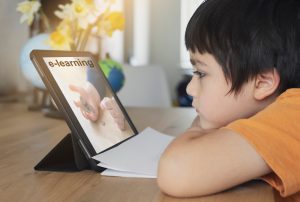 A recent survey into young children’s media use in the United States found that 20 years after the birth of the World Wide Web and a year or so after the first iPad sale, the media world that children are growing up in is changing at lightning speed.
A recent survey into young children’s media use in the United States found that 20 years after the birth of the World Wide Web and a year or so after the first iPad sale, the media world that children are growing up in is changing at lightning speed.
A survey of 1384 parents of children aged birth to 8 years reported that nine-month-old babies spent nearly an hour a day watching television or DVDs, 42 percent of children aged 8 and under have a TV in their bedroom and 5-year-olds are begging to use their parents’ iPhones. About half of all 2 to 4 years olds (53 percent) and 90 percent of 5 to 8-year-olds have used a computer. Half of all children now have access to one of the new mobile devices at home: either a smartphone (41 percent) a video iPod (21 percent) or an iPad or other tablet device (8 percent).
There is, however, a new digital divide with 38 percent of lower-income parents saying they don’t know what an app is. Many families on lower incomes do not have smartphones, iPads or iPods.
For literacy teachers, this changing media world is of great interest and many people are exploring ideas in the area. I am working with a teacher education student who is investigating the similarities and differences between children’s comprehension of written texts and multimodal texts. She is inquiring whether the familiar metacognitive comprehension strategies of predicting, questioning, making images, seeking clarification and inferring are necessary for comprehending apps and websites with video and other multimodal ways of representing meaning. Previously authors used words and pictures to convey meanings but now web designers can choose to use audio, movies, written language, icons and various design features. Perhaps the comprehension strategies for written texts and multimodal texts are exactly the same?
As media is changing fast, the teaching of reading comprehension strategies has become more important than ever and so too is helping young children write, design and construct their own multimodal texts.
More information about the US survey:
http://www.commonsensemedia.org/research/zero-eight-childrens-media-use-america
Zero to Eight: Children’s media use in America (2011) is a nationally representative survey of parents of US children aged zero to eight, conducted to understand the patterns of media use among young American children. Covering TV, other video, reading, music, computers, video games, and mobile digital devices, the study examines time spent and frequency of use; differences in children’s media use by gender, race, or socio-economic status; the home media environment; educational media use; and access to the newest mobile media platforms like smart phones and tablets. Susan Hill.

